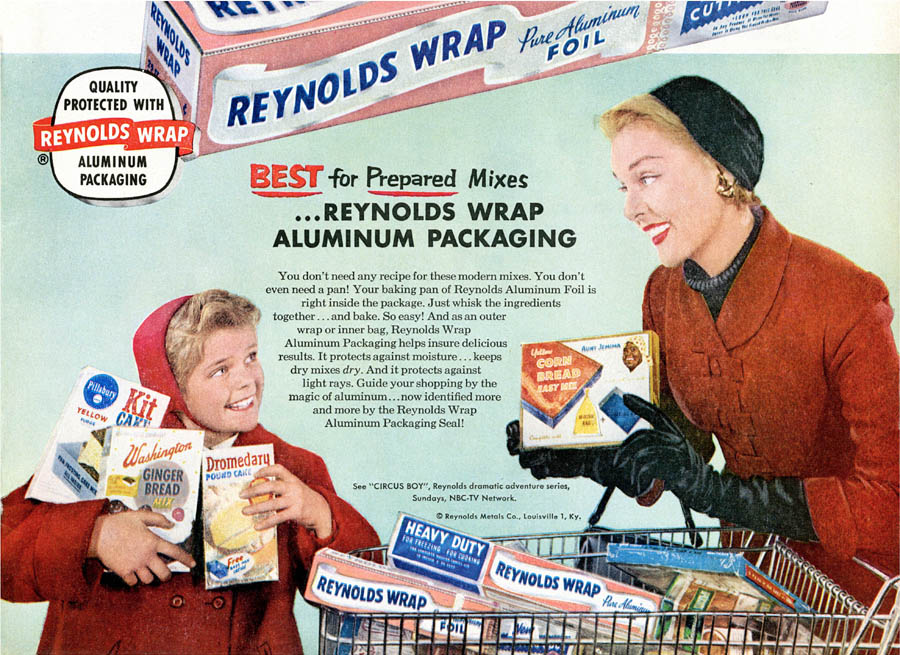On the Threshold of Discovery - Page 7
Mid-century's Silvery and Shimmering Stuff of Dreams
 |
 |
 |
|
|
From the start, aluminum has been the stuff of dreams.
Back in 1865, in his novel From the Earth to the Moon, Jules Verne envisioned spacecraft of aluminum, "three times lighter than iron," he noted, adding that the metal "seems to have been created with the express purpose of furnishing us with the material for our projectile."
Aluminum is easily stretched and shaped, silvery and beautiful, and capable of gaining strength by alloying with other metals. But it took time and several world wars to come into its own.
The early years of the 20th century saw such wondrous aluminum products as violins, lamps, and angular chairs by Dutch designer Gerrit Rietveld. The Doughboys of World War I carried aluminum canteens.
Art Deco was a natural style for the lightweight material, which went into the gleaming bodies of locomotive flyers and yachts—and vacuum cleaners and lamps, with their stylized speed lines.
Marlene Dietrich gave the metal a boost by stretching her long legs across aluminum tubular furniture designed by Warren McArthur in her Los Angeles home. Architects Lawrence Kocher and Albert Frey created the 'Aluminaire House' on Long Island in 1931.
But it wasn't till the end of World War II, after aluminum production had ramped up for defense, that aluminum dreams truly became reality—while never completely leaving the dream stage.
'Here comes the flying bus,' a 1946 ad for Bohn Aluminum & Brass Corp. trumpeted, showing an aluminum streamlined, blue-and-silver bus propelled by fore and aft rotors.
"No other major basic industry in the U.S. mushroomed like aluminum during World War II," Fortune magazine wrote that year. "Looking forward, no other basic material has better possibilities for expanded peacetime use."
The Big 3 companies—Alcoa, Reynolds, Kaiser—brought in top-drawer designers to design furnishings, housewares, houses, and cars from aluminum—Charles and Ray Eames, Noguchi, Eliot Noyes, Herbert Bayer, many more. Landscape architect Garrett Eckbo created a modern garden out of aluminum.
Aluminum became as much a part of mid-century modern design as Formica or the freeform curve—from aluminum Christmas trees and Alcoa's 'Care-Free' aluminum houses to soda cans and George Nelson's jaunty Half-Nelson Lamp.
And Jules Verne was right. When Sputnik headed towards the stars in 1957, beginning the space race, it was constructed of an aluminum alloy.




